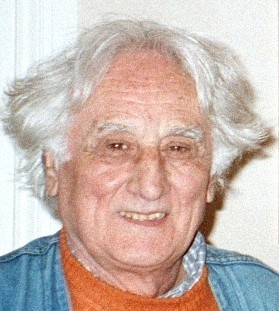

| Home |
Map |
Biography |
Exhibitions |
Catalogues |
Galleries |
Virtual
Exhibitions |
Links |
Contact |
Français
 |
Italiano
 |
 |
ANTONIO is listed in E. BÉNÉZIT
(1999) - DICTIONARY OF
PAINTERS, SCULPTORS, ILLUSTRATORS AND ENGRAVERS. - Editions Gründ,
Paris, page . ANTONIO, pseudonym of Antonio Cardarelli, subsequently Antoine. Born on the 24th of march 1930 in Spoleto (Umbria). XXe century. Active since 1957, naturalized French in 1993. Italian. Painter using mixed techniques, gouache, collages, engravings, tapestry cartoons. Of abstract trend. He began painting early, from 1947, influenced by the metaphysical painting of Chirico, then turning towards figurative. In 1957 he established himself in Paris. |
| Since 1954, he has participated in
collective or individual
exhibitions, notably : 1960 Warsaw, Krzywe Kolo gallery ; 1963 Paris,
Camille Renaud gallery ; 1965 Ostend, Mercator gallery ; 1969 Paris,
Italian Painters and Sculptors in France, Italian Cultural Centre ;
1981 Paris, Painting and Music, Sainte-Chapelle ; 1986 Rome, Art of
entertaining, French Cultural Centre ; 1990 Tunis, French Cultural
Centre ; and Hauterive/Neuchâtel, Gallery 2016 ; 1996 Toronto,
Teodora
gallery ; 1996 Brussels, Gallery 2016. Alongside his purely pictorial work, in 1982, Antonio created a polyptych destined for the presidential palace of the Elysée ; in 1983, 1984, 1985, he created tapestry cartoons to order from the Manufactures Nationales of Gobelins and of Beauvais ; in 1985 sketches for tablecloths to order from the Centre National d’Arts Plastiques ; in 1994 six engravings in colour to order from the Gallery 2016 of Hauterive/Neuchâtel and of Brussels. Since his installation in Paris in 1957, his work may be structured by successive periods. Firstly, the period of the “Emotional Spaces” consisting of oil paintings, polychromatic wooden works, temperas, collages, of abstract intonation. From 1968 his work developed in its diversity according to a selection of themes, reworked by variations : Windows, Bridges, Chairs, Sieves, which occasionally conjugate in Chair and Window or Table and sieve. He himself qualifies the works of this period as “liberal figuration”, a term which does not completely cover the reality of his paintings. By all means, the themes evoked, windows, chairs, etc. are cursorily treated, with apparently rudimentary pictorial means, but first of all their summary evocation by a few rare lines or spots appear more as an abstraction and secondly this summary evocation is above all a pretext for works of chromatic variation : sometimes flamboyant, for example from a red sensually modulated which exalts the punctual intervention of a black or a dark green or inversely, in the Nocturnal Windows, of an omnipresent black slightly stimulated by sparse clear signs, sometimes by simple scratching with a knife directly in the paint ; other times tenderly poetic in the refinement of a little grey lightly tainted with ochre, pink, orange or blue. BIBLIOGRAPHY : Catalogue Antonio, Gallery 2016, Hauterive/Neuchâtel, Brussells. Printers Petruzzi, Città di Castello, 1995. MUSEUMS : Montpellier (Municipal Fund) – Paris (“FNAC” National Creative Arts Foundation). |
|